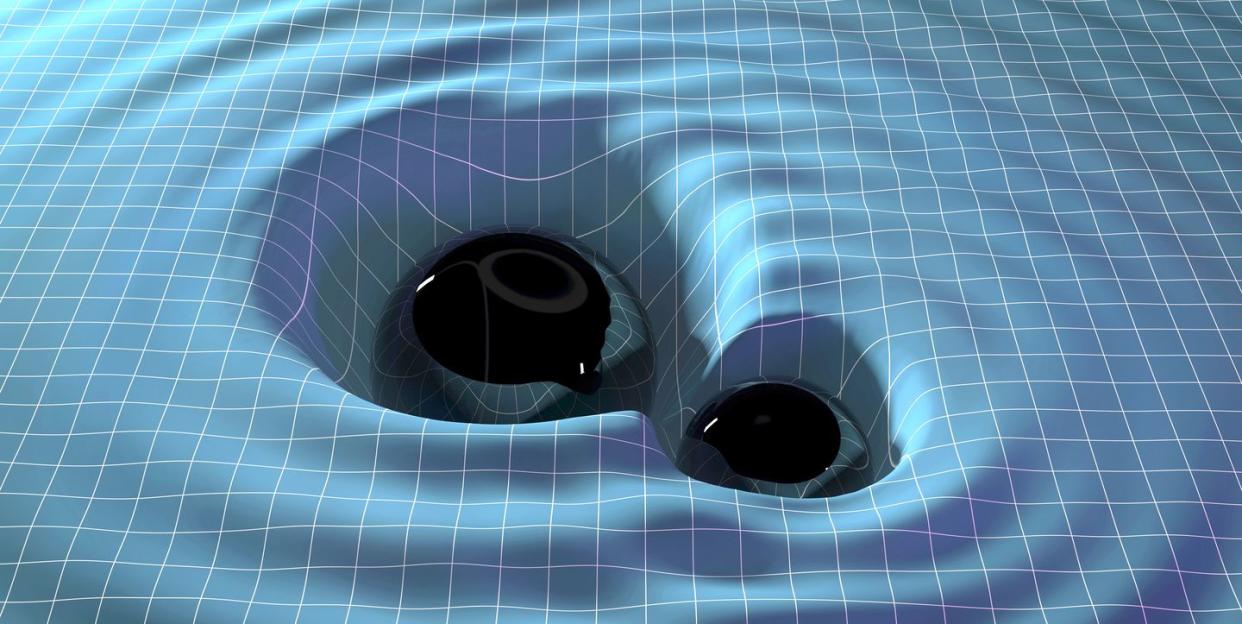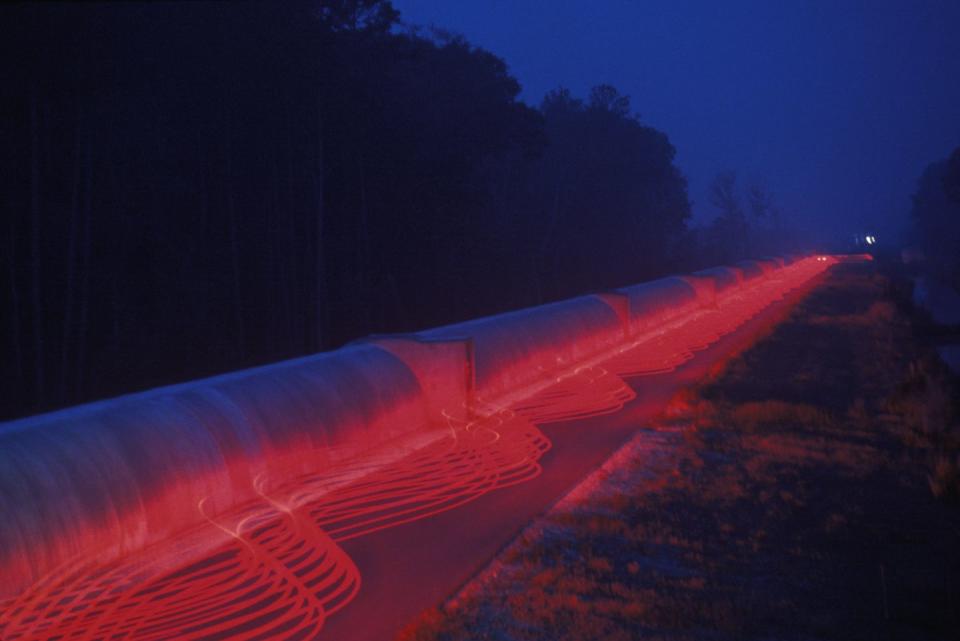How Gravitational Waves Could Give Us a Glimpse of the Invisible Universe

Immense objects like stars cause spacetime to stretch and compress measurably.
Astrophysicists examined the potential of “glints” produced by gravitational waves scattering off the curvature of spacetime.
The glints could enable researchers to measure the internal density profiles of white dwarfs and neutron stars.
Could gravitational waves be used someday to probe distant matter in the universe? Through a theoretical physics calculation, researchers from Case Western Reserve University suggest that they could. Their work demonstrates that signals scattered by large astronomical objects could reveal what is inside them.
🌟You love the cosmos. So do we. Let’s nerd out over it together.
Gravitational waves are very subtle. It takes extremely sensitive, precise instrumentation to detect the ripples that stretch and compress spacetime, a combination of time and three-dimensional space.
General relativity predicts that these scattered wave signals should be larger than physicists expected, astrophysicists Craig Copi and Glenn Starkman write in a paper published over the summer in the journal Physical Review Letters. “People have always been interested in measuring something new,” Copi tells Popular Mechanics. “This gives us a completely new way of viewing things in the universe.”
Both electromagnetic and gravitational waves move at the speed of light and are polarized. Looking at gravitational waves can allow us to see inside most objects that are otherwise opaque, according to Copi. However, gravitational waves can be absorbed by black holes, so measuring the size of black holes requires additional steps and analysis.
According to Case Western graduate student Klaountia Pasmatiou’s calculations for this study, if physicists use these equations in combination with data from the Laser Interferometer Gravitational-Wave Observatory (LIGO), they could measure the internal density profiles of stars, including white dwarfs and neutron stars. A white dwarf is a small, dense star that has contracted to a smaller size. A neutron star is formed from the collapse of a supergiant star.
Researchers could also look at “clumps of dark matter,” Copi says. Dark matter does not reflect, emit, or absorb light. “You could imagine there’s potentially more exotic things out there. People talk about all sorts of possibilities.”
California Institute of Technology physicist Katerina Chatziioannou works on one of the two LIGO projects and is not affiliated with the Case Western team’s study. “There are many areas of space where light cannot come out but gravitational waves can. They can also be emitted in a vacuum,” she tells Popular Mechanics. “Gravitational waves propagate uninhibited through matter. Light does not do that. We cannot see what’s happening on the other side of a wall, for example, because the photons cannot cross the wall. We cannot see what’s happening in the cores of stars or in the cores of supernovas,” Chatziioannou explains.
However, Copi and his colleagues found that when gravitational waves scatter off the curvature of spacetime caused by objects, scientists can register faint signals from this echo effect, called glints. Earlier, scientists thought glints would be too weak to detect.
“In this paper, we’re looking at an effect that exists in general relativity,” Copi says. “It’s not new in that sense, but it’s something people haven’t looked at yet. This potentially allows us to see things we otherwise wouldn’t be able to see because we’re going to get some signals from gravitational glints which, assuming general relativity is correct, are there.”
How LIGO Measures Gravitational Waves
Because it is difficult to detect gravitational waves directly, LIGO is located remotely in Louisiana and Washington to reduce the disruptive effects of urban environments. The Washington setup is located at a nuclear-waste site that is relatively quiet.

“A gravitational wave … stretches and shrinks the lengths over which the laser is bouncing,” Copi says. “You see the interference pattern change.”
The measurement requires a precision of 10-18 meters, smaller than the width of a proton, Chatziioannou says. This involves averaging the measurements of a large number of photons in a laser. “You have a laser that’s split into two that bounces on two surfaces and comes back and recombines. The way in which it recombines tells you about the distance between where the laser was emitted and where the test masses are,” she explains.
Why Measuring Black Holes Is Tricky
When LIGO researchers want to analyze black holes, it’s less straightforward. First, a photodetector measures the voltage from the lasers, Chatziioannou says. The software converts the voltage to gravitational waves and measures their strain. Then, the analytics tools convert the strain to black hole masses. This process requires a technique called match filtering, in which a computer compares the signals to those the scientists predict. The researchers take their general relativity equations and solve them for many parameters of the signal. Filtering out noise requires sophisticated approaches.
Scientists have been seeking to detect gravitational waves for over a century, since Albert Einstein predicted their existence in 1916. Researchers began building the LIGO labs in the 1990s, and finally in 2015, a LIGO site detected gravitational waves for the first time. It was an exciting moment for the physics community.
For many decades, it was unclear whether gravitational waves really existed. Now that scientists can find them, they can explore stars in much greater depth. “Stars may fade and dark matter may never glow, but they cannot hide from gravity,” the research team wrote in its paper.
You Might Also Like


